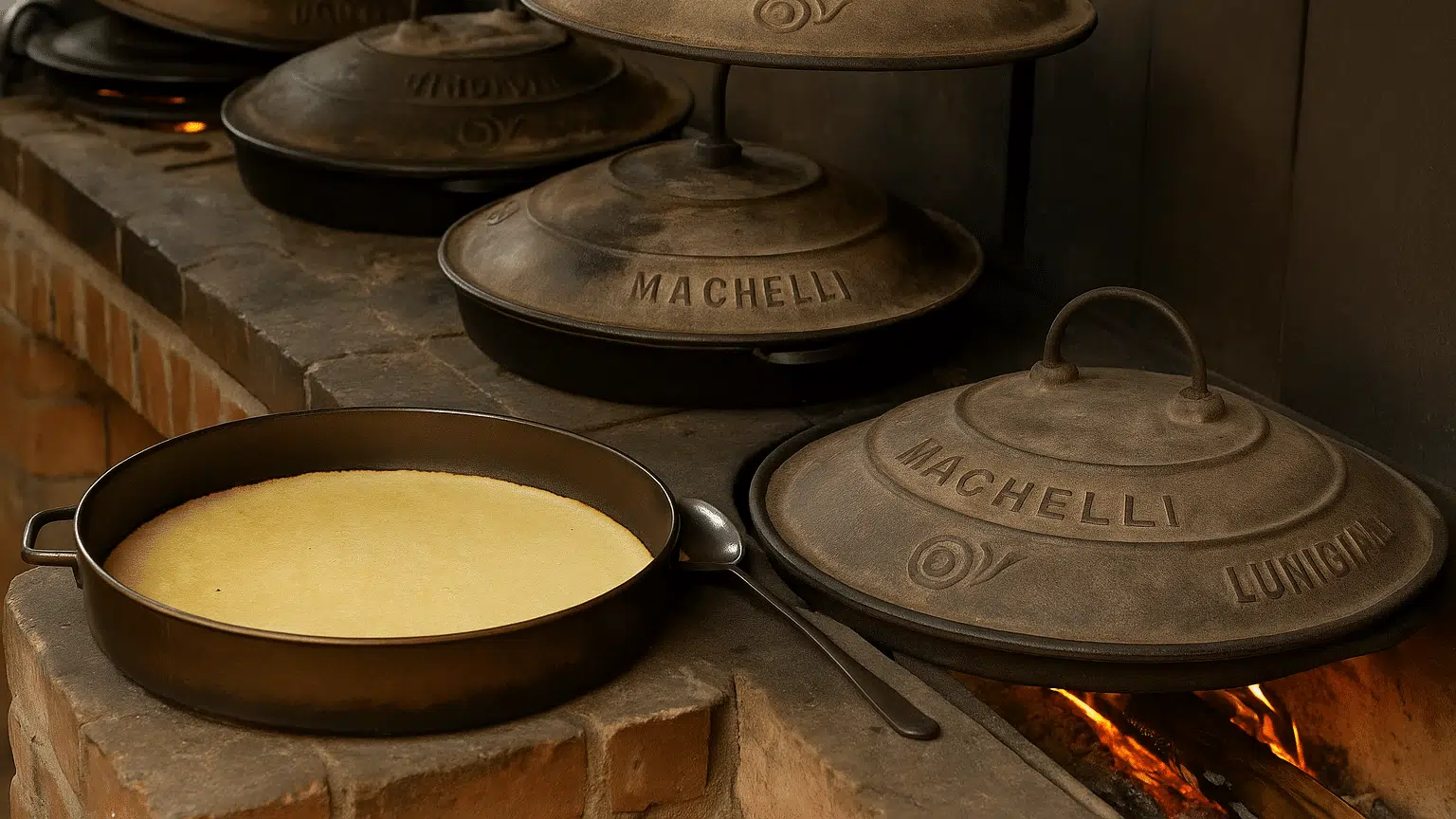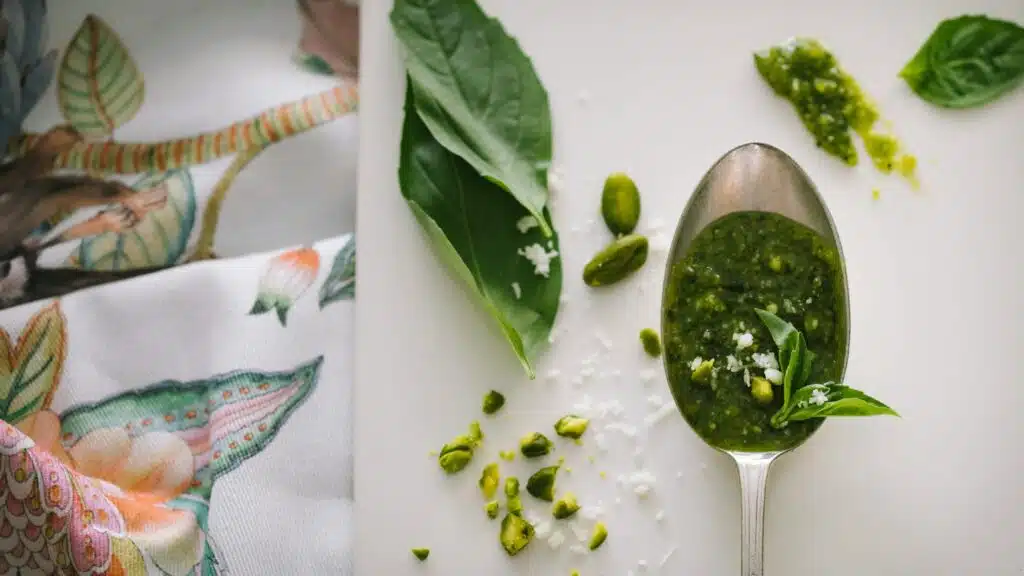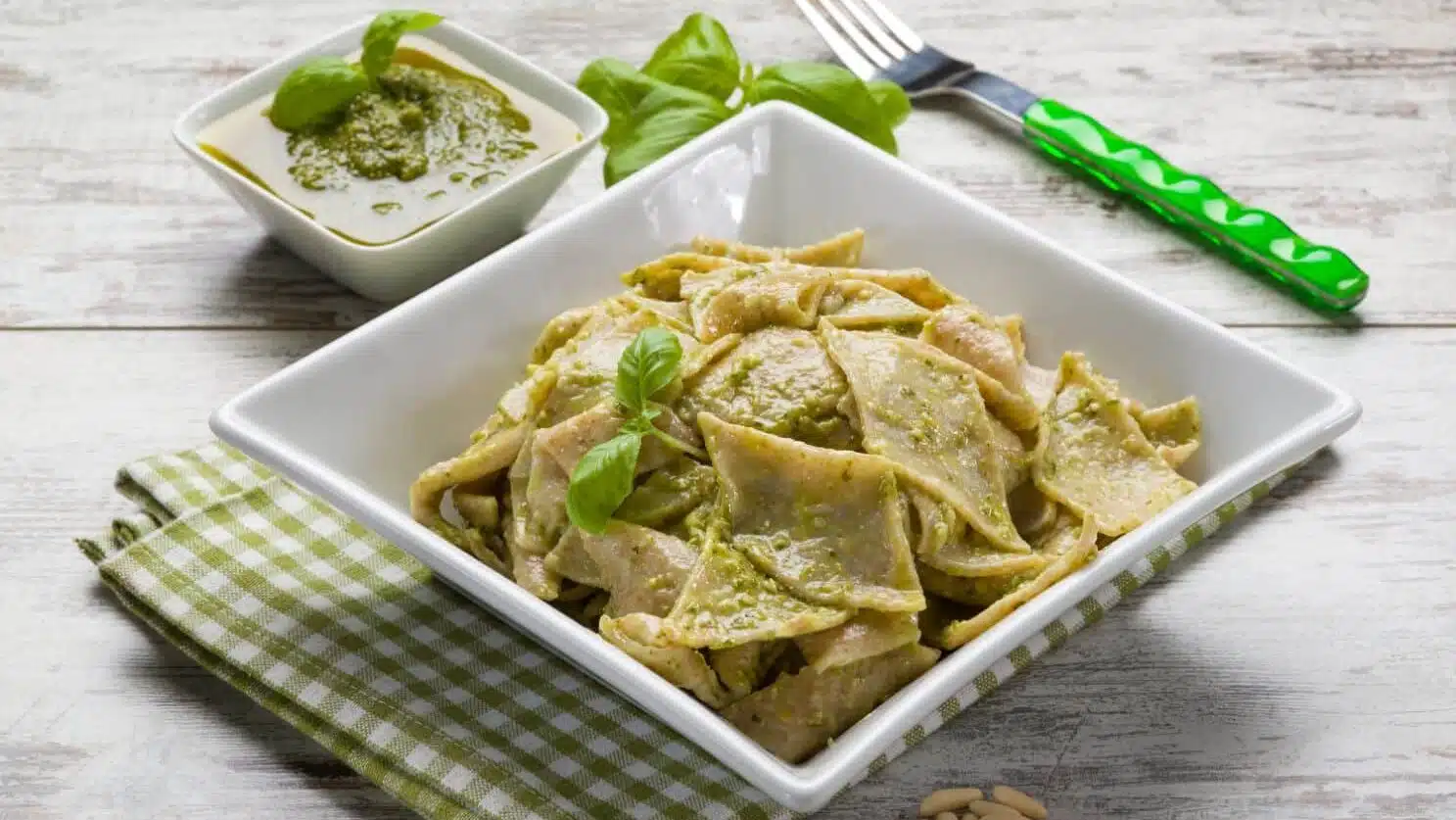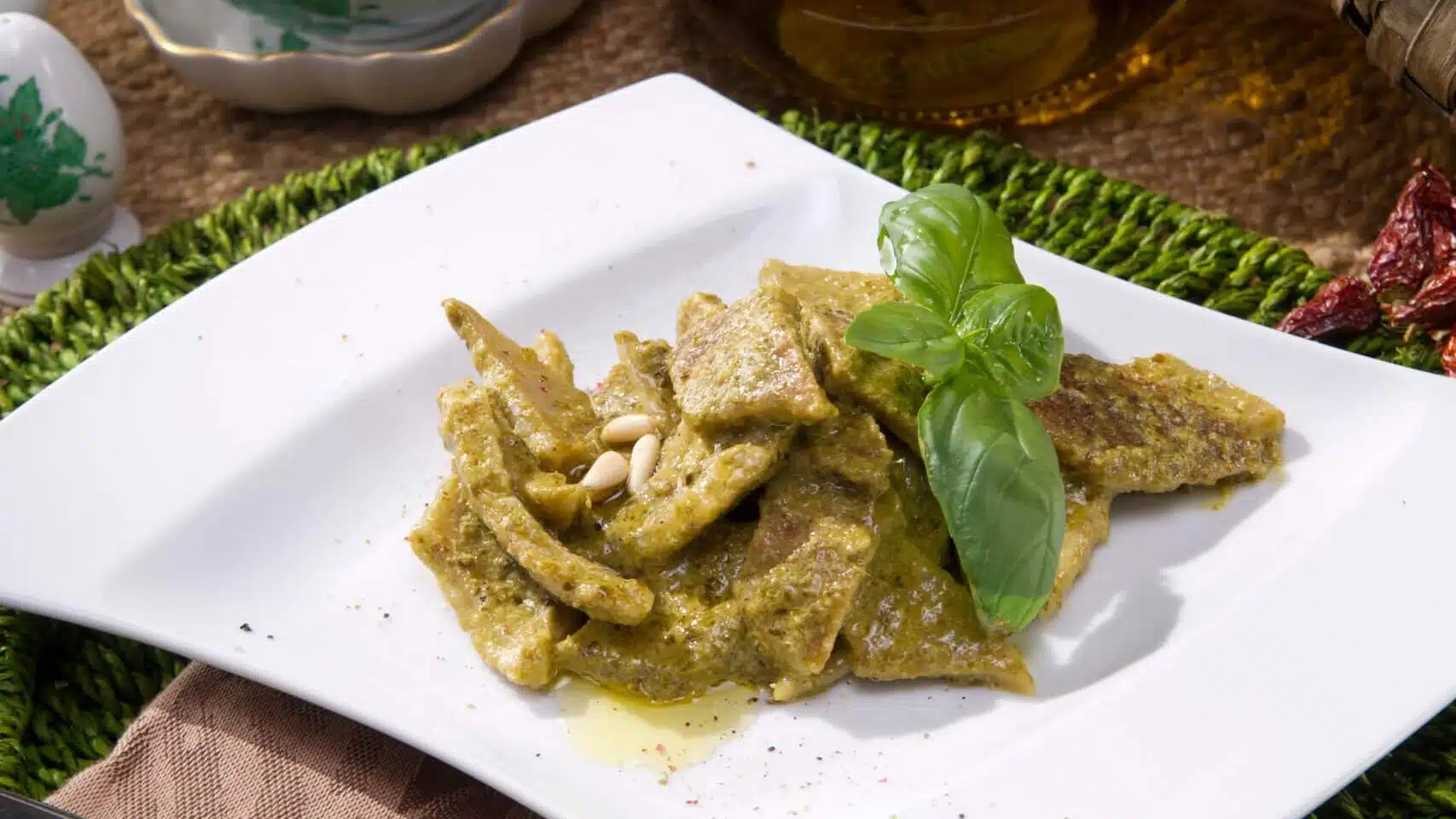This ancient pasta, considered the oldest in Italy, is a symbol of the culinary traditions of Lunigiana and Eastern Liguria.
As a child, I remember Sundays in my grandmother’s kitchen, immersed in the scents of tradition. The most anticipated moment was when she prepared the testaroli: a simple batter of flour, water, and salt cooked on a hot "testo" plate. The sizzling sound of the batter hitting the hot metal was pure magic.
Once ready, they were cut into diamond shapes and dressed with fresh pesto made from just-picked basil, garlic, pine nuts, Parmigiano, and extra virgin olive oil. Gathered around the table, we enjoyed a simple yet history-rich dish.
Today, I joyfully recount this tradition, which lives on in gestures and memories. The most beautiful part is seeing my daughters—just like me as a child—eagerly awaiting the moment to savor this dish. Their eyes lighting up with the first bite confirm that some emotions are timeless.
The History of Testaroli: A Journey Through Time
Testaroli has ancient origins, dating back to Roman times. It is believed they evolved from flatbreads cooked on hot stones, used by Roman soldiers during military campaigns. The name “testaroli” comes from “testo,” the cast iron or terracotta plate used to cook the batter. This cooking technique has remained unchanged for centuries, making testaroli one of the oldest pastas still made today.
The Original Testaroli Recipe

Ingredients:
- 400 g of soft wheat flour
- 600 ml of water
- A pinch of salt
Instructions:
- In a bowl, mix the flour and salt. Slowly add water while whisking until you get a smooth, lump-free batter.
- Heat the testo (or a non-stick pan) and pour a ladleful of batter to form a disk about 5 mm thick.
- Cook for a few minutes until the surface solidifies, then remove from heat and let cool.
- Cut the disk into diamond shapes about 5 cm wide.
- Bring a pot of salted water to a boil, then turn off the heat and soak the testaroli for about 1 minute.
- Drain and dress as desired.
Testaroli and Pesto: An Inseparable Pair
When we talk about testaroli, we can’t help but talk about pesto too. So here I am, ready to walk you through making real Ligurian pesto step by step! Get your mortar and quality ingredients ready, and let’s prepare this famous sauce, perfect for our beloved testaroli!
Pesto alla Genovese Recipe

Ingredients (for about 4 servings):
- 60 g of fresh basil leaves (I use those from our agriturismo garden)
- 30 g of Italian pine nuts
- 2 cloves of garlic
- 45 g of aged Parmigiano Reggiano DOP
- 15 g of Pecorino Fiore Sardo DOP
- 60 ml of Ligurian extra virgin olive oil (I recommend our own for a genuine, authentic flavor)
- A pinch of coarse salt
Instructions:
If you don’t have a mortar, you can use a blender, pulsing to avoid overheating, which can alter the basil’s color and flavor. To store the pesto, place it in a glass jar, cover with a thin layer of oil, and seal tightly. It keeps for 2–3 days in the fridge.
- Prepare the basil: Gently wash the basil leaves in cold water and dry carefully without crushing them.
- Crush garlic and salt: In a marble mortar, crush the peeled garlic cloves with a pinch of coarse salt until creamy.
- Add pine nuts: Add the pine nuts and continue grinding until the mixture is smooth.
- Incorporate basil: Gradually add the basil leaves, crushing with circular motions until a bright green paste forms.
- Add cheeses: Add the grated Parmigiano and Pecorino and mix well.
- Add oil: Slowly drizzle in the olive oil, stirring gently until creamy.
How to Enjoy Testaroli

The traditional dressing for testaroli is pesto alla genovese, but they can also be served with extra virgin olive oil and Parmigiano Reggiano, or light tomato and basil sauces. Their sponge-like texture makes them perfect for absorbing flavors and offering a unique taste experience. Around here, they’re also enjoyed with mushroom sauces, ragù, or even mussels! Read this article for the full recipe!
Our Cuisine: Tradition and Authenticity
The cuisine of Agriturismo I Due Ghiri was born to honor the authentic flavors of Liguria and Lunigiana. We use local and seasonal ingredients, many from our own organic garden and nearby producers. Every dish is prepared with care, following recipes passed down through generations.
Not viewing the video well? Visit our profile on Instagram!
Wines from Our Cellar
To perfectly pair with our dishes, we offer a selection of local wines from Liguria and Lunigiana. Among the whites, Vermentino and Pigato stand out—fresh and aromatic, ideal with pesto testaroli. Among the reds, Rossese and Ciliegiolo offer full, round flavors, perfect with oil and cheese or ragù. Each wine is carefully selected to enhance the flavors of our dishes and offer a complete food and wine experience.
A Family-Friendly and Welcoming Experience
At Agriturismo I Due Ghiri, every guest is welcomed like a friend. Our kitchen is the heart of the house—a place to share joyful moments and discover the authentic tastes of Liguria and Lunigiana. Whether you’re looking for relaxation, a romantic getaway, or a family holiday, here you’ll find a warm, welcoming atmosphere where you feel right at home.
We look forward to giving you a unique experience of taste and tradition!
Gaia – Agriturismo I Due Ghiri
FAQ
What are testaroli?
Testaroli are traditional pasta from Lunigiana and Eastern Liguria, made from a batter of flour, water, and salt, cooked on a hot plate called a "testo," then cut into diamond shapes.
How are testaroli cooked?
After cooking on the testo, testaroli are cut and soaked in boiling water for about one minute. Then they are dressed with pesto, oil and cheese, or other light sauces.
Are testaroli vegetarian-friendly?
Yes, testaroli are naturally vegetarian. The dressings can vary, and it’s easy to choose entirely vegetarian options.

